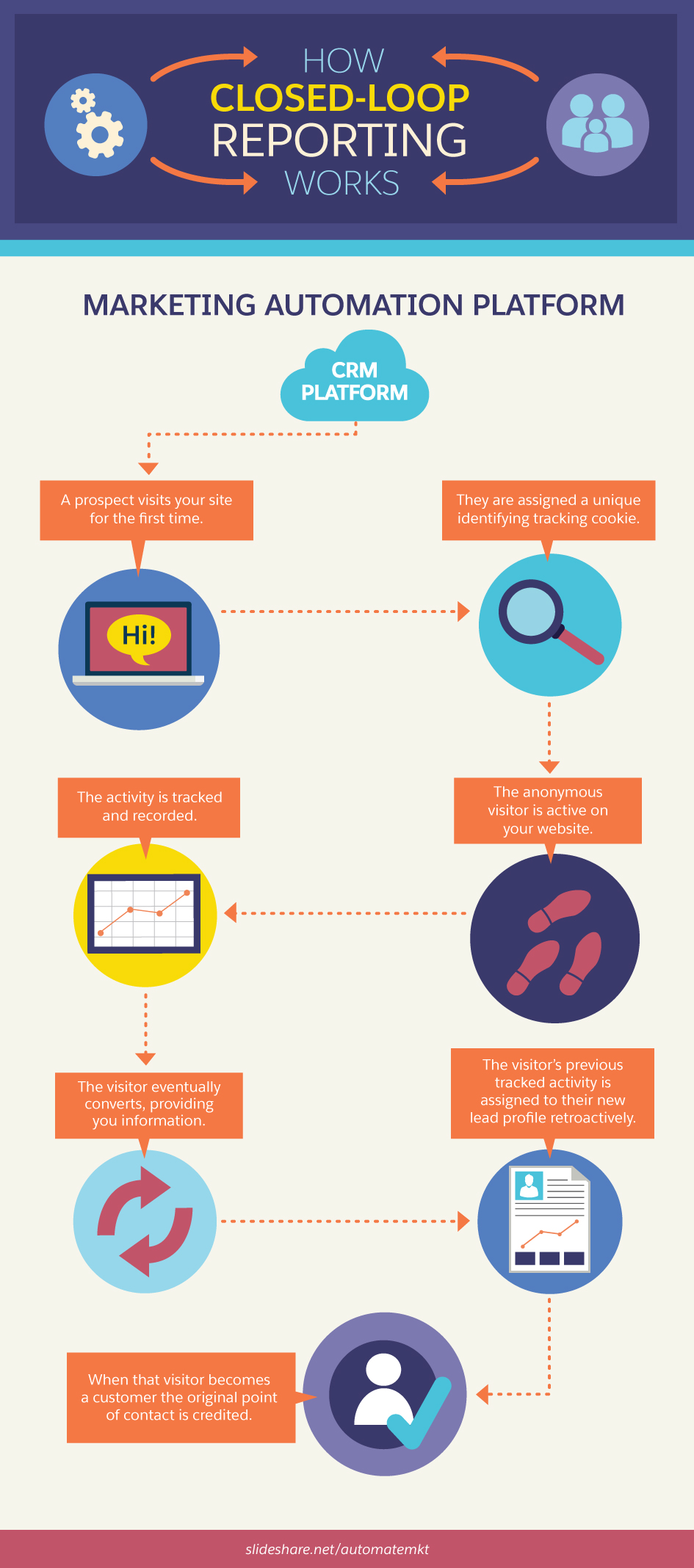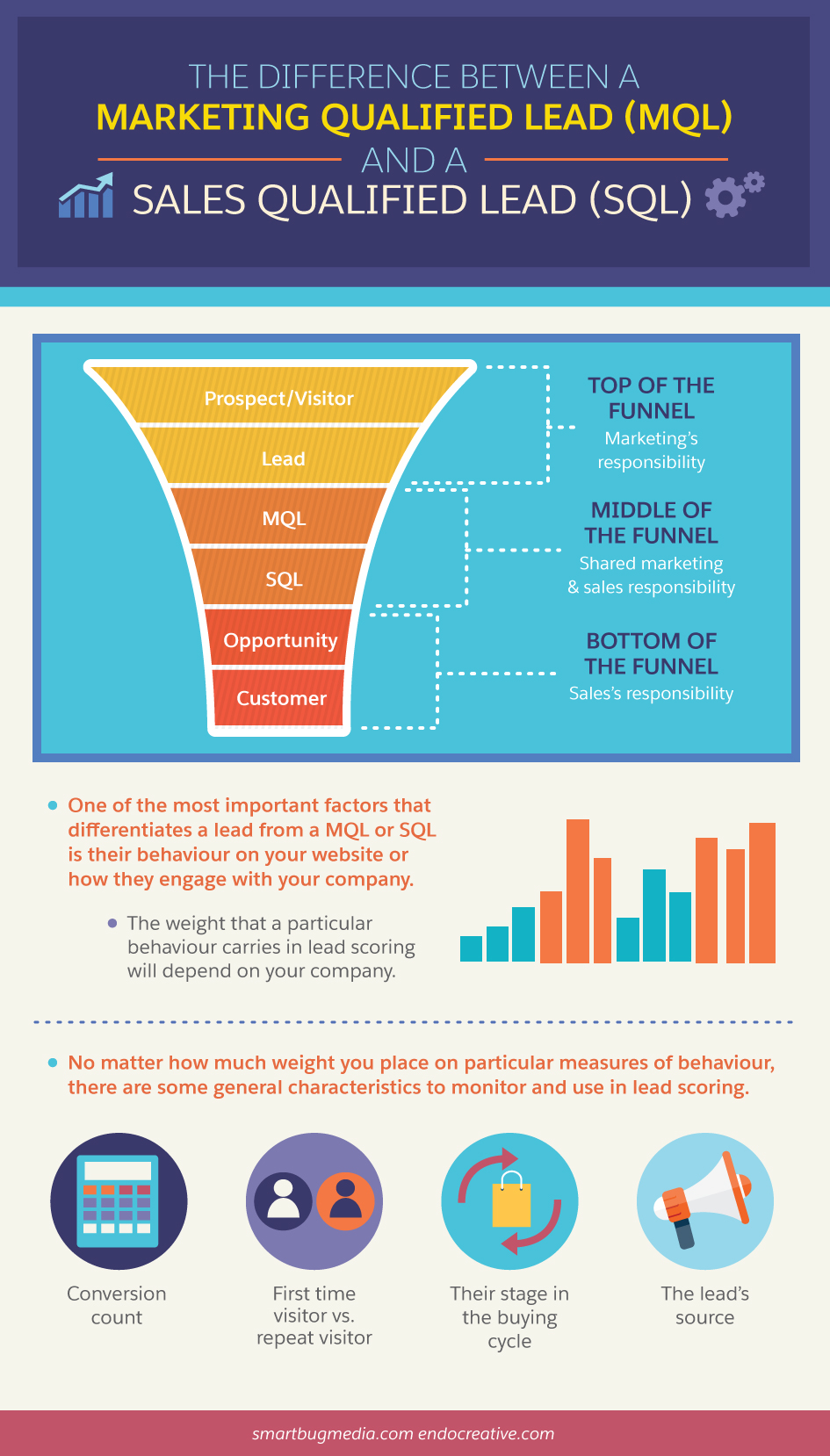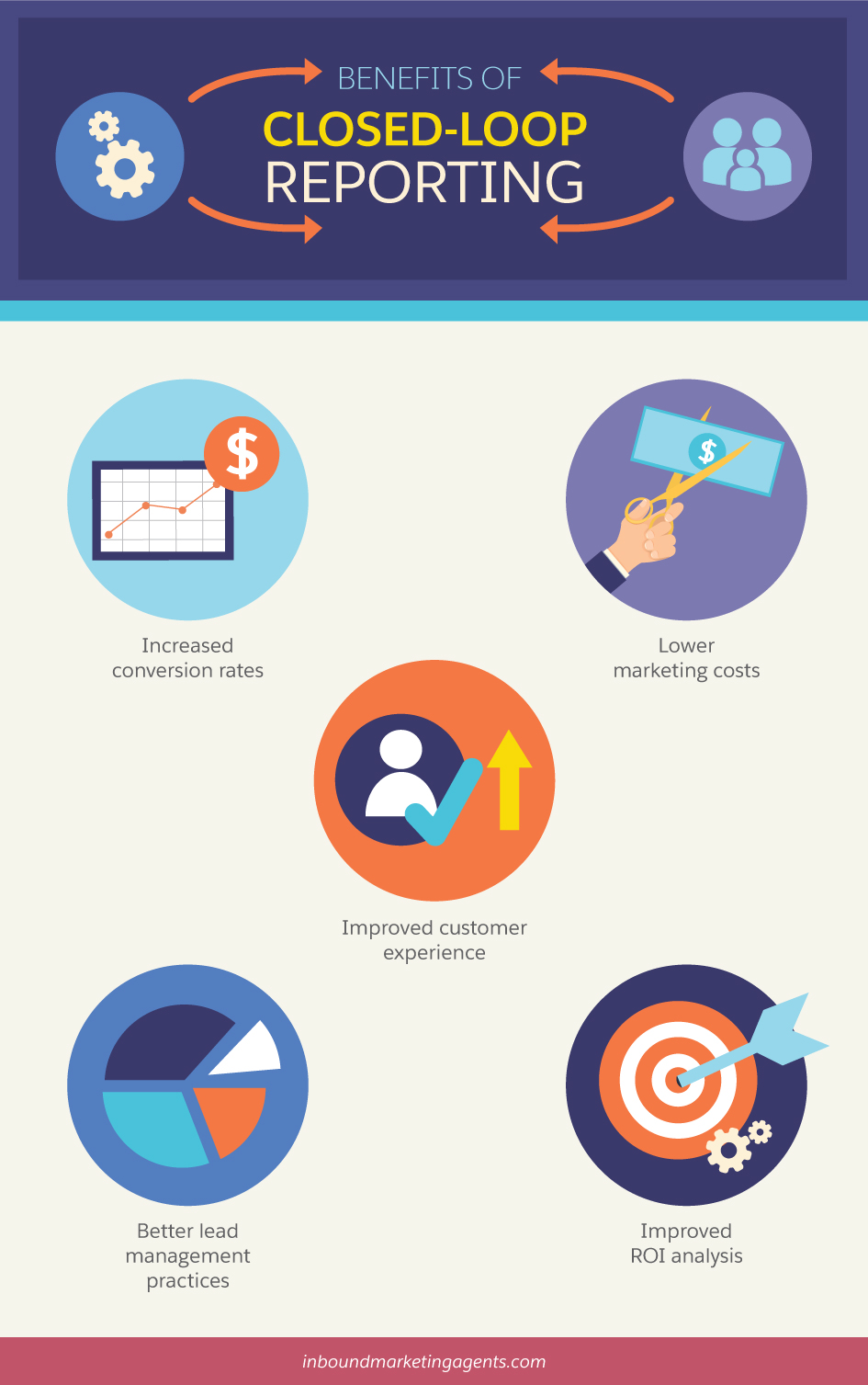Laypeople often conflate marketing and selling, assuming that if you can do one well, the other takes care of itself and you have harmony. Many business leaders, however, innately understand how distinct the two functions are, and how much a lack of cohesion can affect the operation of the company.
Even when the marketing team is delivering leads efficiently and the sales team is converting prospects into customers, many organizations still see a gap between marketing qualified leads (MQLs) and sales qualified leads (SQLs). There’s still room for companies to use data more efficiently to bring the two functions together, and closed-loop reporting is an integral part of the process.
With closed-loop reporting, marketing and sales simply share data with each other in an effort to help their counterparts make more informed decisions that will affect the other in the future. This process helps create better quality leads, maximizes value from marketing and sales budgets, leads to more reliable customer data, and crystallizes ROI contributions.
How Closed-loop reporting works
Marketing automation platform
CRM platform
- A prospect visits your site for the first time
- They are assigned a unique identifying tracking coockie
- The anonymous visitor is active on your website
- The activity is tracked and recorded
- The visitor eventually converts, providing you information
- The visitors's previous tracked activity is assigned to their new lead profile retroactively
- When that visitor becomes a costumer the original point of contact is credited

The gap between MQLs and SQLs
How easy would it be if your marketing and sales teams each understood what the other is looking for in terms of qualified leads, and why they use the criteria they do in the qualification process? It can be done! It just takes a well-oiled partnership between the sales and marketing units, and a commitment to sharing relevant data that can be used to inform what each side needs in order to serve both the other and the organization in the best ways possible. In essence, that’s all closed-loop reporting is. It involves observing and analyzing data from both marketing automation and CRM solutions in conjunction with one another to empower both units to make better decisions that will affect everyone involved.
In any situation where the loop remains open, marketers often ignore or don’t have access to information from near the end of the sales cycle that could significantly impact how they choose to qualify leads. By examining criteria, such as customer interaction with the website's sales apparatus and demographic information, they can help bridge the gap between MQLs and SQLs and reliably deliver leads that savvy sales reps will be able to guide through the rest of the process.
Optimize results from the channels that impact your organization the most
One of the most significant difficulties of marketing in a digitally diverse environment is that you need to stretch your resources across numerous channels, each with their own distinct attributes and challenges. Most marketing professionals feel privileged to have so many different outlets for communicating value to customers, but attempting to exploit each one of the channels optimally can leave you feeling spread too thin.
Not all marketing channels are created equal, and it’s smart to weigh resources based on where your strategy can have the most impact on the leads, and result in more conversions. This is where closed-loop reporting can have a significant impact on the marketing ROI for your most effective channels. By analyzing data from the sales department concerning the quality of leads as they move along the sales funnel, you can uncover crucial details surrounding which channels are consistently producing your best leads and why. You can then redirect your resources as needed in an effort to produce the most conversions possible per every marketing dollar spent. If you’re spending most of your budget on social media promotion, yet the conversion rate of that channel consistently languishes behind organic search and referrals, it would be wise to consider reducing your buy-in for promoted posts across your various social accounts, seek out new potential referral partnership opportunities, and spend more on high-quality SEO-driven content for your owned media.
When using the data gleaned from closed-loop reporting, you don’t have to wonder if the leads produced by marketing across a particular channel end up being a waste of effort. The data speaks loudly and clearly, and an honest assessment can lead you to reduced inefficiencies across the marketing and sales initiatives.
The Difference Between a Marketing Qualified Lead (MQL) and a Sales Qualified Lead (SQL)
- One of the most important factors that differentiates a lead from a MQL or SQL is their behaviour on your website or how they engage with your company
- The weight that a particular behaviour carries in lead scoring will depend on your company
- No matter how much weight you place on particular measures of behaviour, there are some general characteristics to monitor and use in lead scoring:
- First time visitor vs repeat visitor
- Conversion count
- Their stage in the buying cycle
- The lead’s source

Sharpen the ROI contributions from both the marketing and sales functions
As a marketer, you understand exactly how valuable your team’s contributions are to the performance of the company, but you also understand the challenges involved in conveying that value to the various stakeholders involved in the organization. Wouldn’t it be great if there was a strategy that could assist you with presenting clear and unambiguous data that shows the efficacy of your hard work?
It just so happens that’s exactly one of the benefits that a closed-loop reporting strategy provides. When data from the results of the sales and marketing functions inform one another across the entire length of the sales funnel, you are presented with clear, intelligible numbers that show your superiors exactly what a harmonious relationship between the two units can do for the company. These aren’t qualitative assumptions that are subject to interpretation.
For instance, you can give a presentation to company leadership filled with hard data such as: “Through collaboration with the sales department, we concluded that social media promotion efforts were yielding unqualified leads that were difficult to identify early in the buying process. Of the $5,000 spent on this initiative in one quarter, we converted two customers. We have since diverted 75 per cent of this budget to referral partnerships, which have increased from 15 conversions per quarter to 25.”
Close deals more quickly with customers who fit your company
As we’ve learned, closed-loop reporting is all about using specific data throughout the sales process to improve the quality of the leads that are sent to sales. It allows representatives from each unit to have a complete, unobstructed view of the entire sales funnel, where they previously could only discern the data at their own end and had to rely on the judgments of others at the opposite end of the funnel. Eliminating the disconnect in the data between the sales and marketing functions is a way of addressing the problem of longer sales cycles and unqualified leads in a wholesale manner, rather than cherry-picking certain problems and ignoring the root causes.
You can view the relationship between lead qualification and the length of the sales cycle as a chicken and egg scenario: Unqualified leads naturally take more time and effort to close, which lengthens the sales cycle. However, if the marketing department doesn’t have input from the sales department on what constitutes an SQL, then the sales cycle has already been extended by the very search for these unqualified leads. When marketers know exactly who they’re looking for, it reduces the amount of time they have to spend deciding whether a lead is qualified on the front end. They can then deliver these primed prospects to the sales team, who can then close deals more quickly because it’s already clear that the customers are a good fit. With closed-loop reporting you can take advantage of a naturally shorter sales cycle in both functions.
Acquire better data concerning your specific prospects
The previous section ties in closely with the principles of knowing your ideal audience inside and out. It’s a classic part of any successful sales and marketing strategy, and leaders are always searching for ways to use data in innovative ways in pursuit of this goal. Since most marketing and sales leaders understand the basic importance of targeting specific buyer personas, they’ve likely taken the time early in the strategic development process to incorporate these principles into the outlined processes. However, just because you’ve identified and studied your ideal buyer personas at some point doesn’t mean you can be complacent.
Benefits of Closed-Loop Reporting
- Increased conversion rates
- Lower marketing costs
- Improved customer experience
- Better lead management practices
- Improved ROI analysis

Buyers’ industries and companies can evolve over time, courtesy of shifting economic realities, new regulations, supply and demand, or other reasons. As these evolutions take place, your ideal customer (whom you’ve so dutifully outlined) may experience changes in their pain points, abilities, or business needs. By examining the details revealed through your closed-loop reporting effort, you’ll be able to track these buyer behavioural changes and learn how you can continue to provide value for your desired prospects as they face new realities of doing business. You can then update your content and engagement strategies in order to reflect the changes that you have tracked.
Analyze your results to make informed predictions about the future and improve your marketing and sales integration
Marketing and sales are both constantly fluctuating, both independently as units and within the larger organization as a whole. When you are able to implement a cohesive closed-loop reporting strategy, it allows each unit to understand how these changes affect the other’s processes and the totality of the buyer experience. Integration between the marketing and sales teams allows you to look at high-level data as well as intricate variations in numbers to get predictive about the future of the organization, and enables each department to work with the other to prepare for what lies ahead.
Ultimately, closed-loop reporting exists to solve many of the basic problems at the heart of the sales and marketing disconnect. Maximizing channel value, keeping up with customer personas, shortening the sales cycle, and managing budgets effectively are things that every organization desires to improve, and closed-loop reporting is a cohesive strategy for achieving these goals that can be implemented by any type of company.
Share "Closed-Loop Reporting and Why It Matters to Your Company" On Your Site



